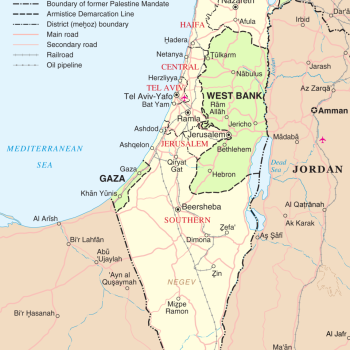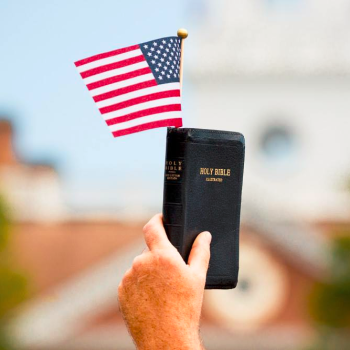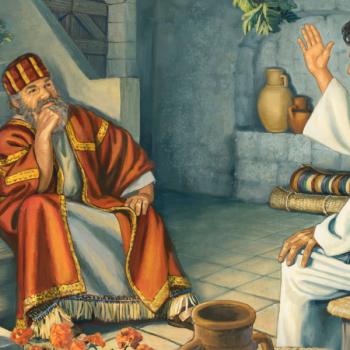
Note: I will not be able to address this issue as it deserves because the information is so plentiful it would easily fill books upon books. Therefore, this is a very slim survey meant to help provide at least some perspective for those who want to better understand why racism still exists in our country today.
Much of the racism that occurs in America today (at least for those not intending to be racist) is based upon a lack of information. I consider myself well-informed on the issue. However, in preparation for writing an article on racism a while back, I realized that there was still so much that I didn’t know. If I, a well-informed person am still learning about the extent of racism in our country, then how much more does the uninformed have yet to understand?
Misconceptions evolve into stereotypes. Stereotypes evolve into axioms. In my experience, most of the misconceptions many white people have about racism towards African Americans revolve around a single premise. They fail to see the larger picture of how racism is embedded in every aspect of our culture. Instead, they view racism on an event-by-event basis. When they do this, they fail to see the larger picture of why those events are occurring in the first place. I believe, as long as individuals are HONEST with themselves, then hopefully their eyes will see what has been so plainly obvious to African Americans for so long.
There is one primary reason for the persistence of racism towards African Americans within our country. For many white folks, it’s an inability to observe how micro-racism fits into the larger context of macro-racism. Macro-racism refers to the overarching historical context of racism. Micro-racism refers to the specific incidents of racism within our society. Unless you place incidents of racism into their larger context, then you will often view those incidents as being isolated to specific people, worldviews, etc. We must understand that all racism is deeply embedded within our culture and is this way because we failed to address the larger historical problem.
Macro-Racism
Believe it or not the Civil War did very little to relinquish the African Americans plight. It certainly made it illegal for an American to own a slave, but that didn’t mean that African Americans were free. You may have never heard this, but African Americans became very successful throughout the south right after the Civil war. And white southerners became very poor. This infuriated white southerners so they created a bunch of laws that are referred to as Jim Crow laws. These laws were meant to not only segregate African Americans from white folks but also strip them of the economic freedoms they were beginning to enjoy. This time period is often referred to as “Reconstruction”.
So why not just move to the north? Because northerners were also very hostile towards African Americans after the war. Many northerners lost loved ones, especially children during the war for what many of them viewed as a pointless political war. Sure they may have disagreed with what the south was doing, but was it really their war to fight, was their sacrifice really necessary? So, there was also growing angst towards African Americans in the north as well. This resulted in informal segregation in the north.
These Jim Crow laws went unchecked for the next 75 years. Even though Jim Crow laws were abolished in the 1960s there is still an informal version of them that exists today. This is referred to as the “New Jim Crow”. For example, many would argue that gerrymandering is a form of Jim Crow. Gerrymandering is when Republicans manipulate the boundaries of an electoral constituency to favor their party. This most often happens to poor African American communities who become discouraged to vote as a result. It also means that Democrats who often represent poor African Americans receive fewer contributions to their party.
Many white people believe that since the Civil War racism in this country, although bad, has gradually gotten better with time. However, this is not true! It wasn’t until after the great depression that perhaps the greatest forms of racism and segregation occurred and is one of the most significant reasons racism still exists today. This is often referred to as “The New Deal”. The New Deal was a set of social programs that were in theory meant to reinvigorate the economy after the great depression. But, really what they did was create greater segregation by keeping African Americans in poverty while increasing the economic status of whites.
One such program that was created was the Federal Housing Administration. It was the aim of this program to help ensure loans were granted by banks so that people could more readily be approved for mortgages.
However, as sociologists Douglas Massey and Nancy Denton document in “American Apartheid: Segregation and the Making of the Underclass” many African Americans were denied loans that would allow them to move into areas that were primarily occupied by whites. These denials were not just for “risky” individuals, but also included affluent African Americans as well. This is referred to as “Redlining”.
The new deal had more to offer than just mortgages. It also provided more jobs for Americans. However, many of those jobs went to whites first. But, perhaps even more significant was the National Industry Recovery Act, which was passed in 1933, about 500,000 African Americans in the south actually lost their jobs. At the same time, new jobs were created for unemployed white men.
Nearly every element within the New Deal informally perpetuated racism through segregation. The New Deal acted as the foundation for what was to come during the economic boom of the ’50s.
From the ’30s to the ’50s the government had inconspicuously wrangled African Americans by creating infrastructures that limited African Americans to primarily residing in urban areas. With whites primarily living outside of the city, this created sub-urban areas.
The inherent aspect of racism within the New Deal’s housing agenda was acknowledged in the establishment of HUD in the mid-’60s. But even the establishment of HUD was not enough to help quench the fire of discriminatory practices within the housing industry. As was evident in the housing crisis of 2009, African American’s were a significant population affected by the practice of predatory loans. This meant when the housing crisis occurred, they were affected more seriously than others.
In 2014 UPenn did a highway study across the country. One case study that serves as an example of the problem across the county was how the highways were constructed in Chicago. Much of the city highways were constructed off from the ground (in some cases a good distance off the ground). The scenery on both sides of the highway is large walls and a beautiful city skyline. When you leave the city the highway lowers to ground level and walls are gone. This form of construction was meant to allow drivers to travel through the city without having to see impoverished African American communities. Highways like this have been built all around the US.
Highways were also used to divide parts of a city (east from west and north from the south) in order to keep African Americans and whites separated. These intentions were real and well known. They were not meant to be informal forms of racism, it was overt. The Reconstructionist mentality was still in full swing.
The effects of redlining and all of the inequalities that we have discussed thus far are still felt today. Inequality and discriminatory behavior are still practiced consciously and subconsciously. As we will discuss in part two things did not get better for African Americans as we approached the 80s.
You can view my UNenlightenment YouTube Channel HERE
You can view my UNenlightenment Podcast HERE
You can follow me on FaceBook HERE


















